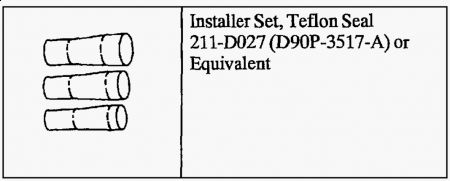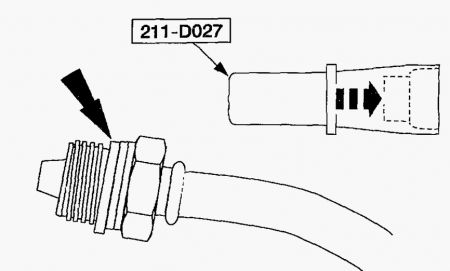Hello -
Forgot to provide the bleeding - not sure if you knew how.
BLEEDING & REFILLING SYSTEM
1. Fill pump reservoir. See RECOMMENDED FLUID TYPE table. Operate engine until power steering fluid reaches operating temperature. Stop engine. Recheck fluid level. Add fluid as necessary. Repeat procedure until fluid level stabilizes.
2. Raise and support vehicle so front wheels are off ground. Start engine. Turn steering wheel from side-to-side several times. Avoid hitting stops on holding wheel in full left or right position. Fluid level should remain visible.
3. Return wheels to center position. Operate engine for 2-3 minutes. Road test vehicle. Recheck fluid level. Fluid containing air will have a milky appearance. All air should be eliminated to obtain normal steering.
NOTE: Abnormal noise originating from the power steering system may be caused by air trapped in the system. Rotunda Vacuum Tester (021-00014) and following procedure will eliminate this condition.
4. Carefully remove pump filler adapter and dipstick. Check and fill reservoir to "COLD" mark. Disconnect ignition coil lead. Raise front wheels of ground.
5. Crank engine while cycling steering wheel. DO NOT hold wheel on stops. Add fluid if necessary. Attach coil lead. Install evacuation tool onto reservoir.
6. Start engine. Apply 15 in. Hg on reservoir for approximately 3 minutes with engine idling. As air is purged from system, vacuum will decrease.
7. Maintain sufficient vacuum with vacuum source. Release vacuum. Check fluid level. Install filler adapter assembly and dipstick. Start engine.
8. Turn steering wheel from stop to stop while checking for leaks. If condition is severe, repeat procedure until all air is removed. Lower vehicle. Road test vehicle.
RECOMMENDED FLUID TYPE
Application Fluid Type
Ford Motor Co. ATF Type F
Monday, June 7th, 2021 AT 3:23 PM
(Merged)






